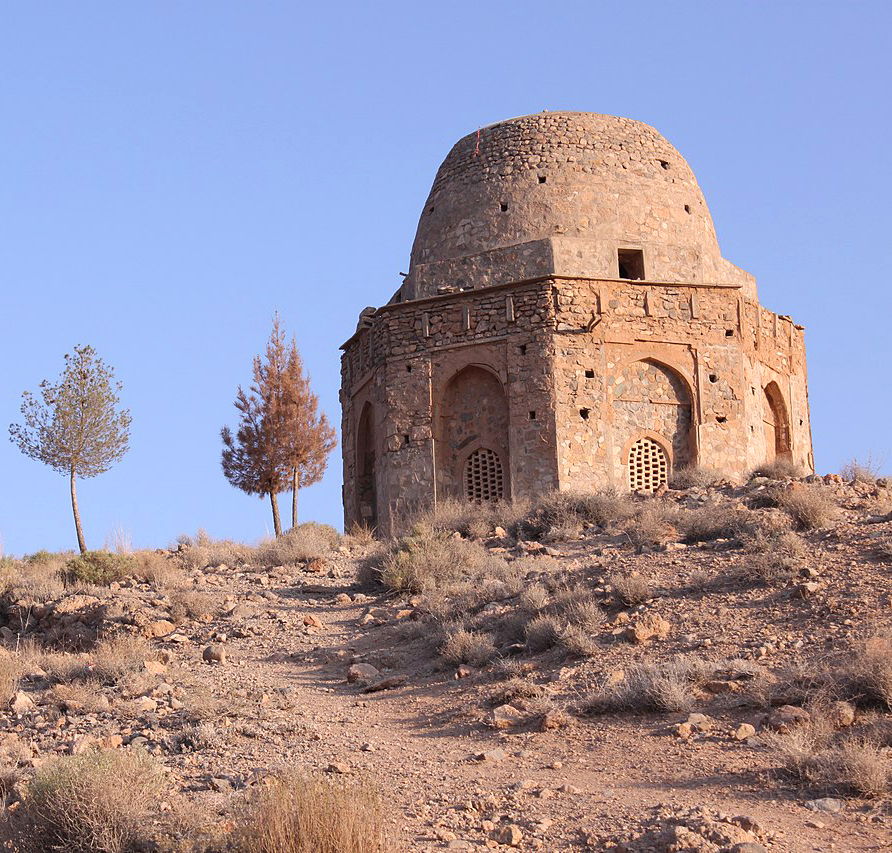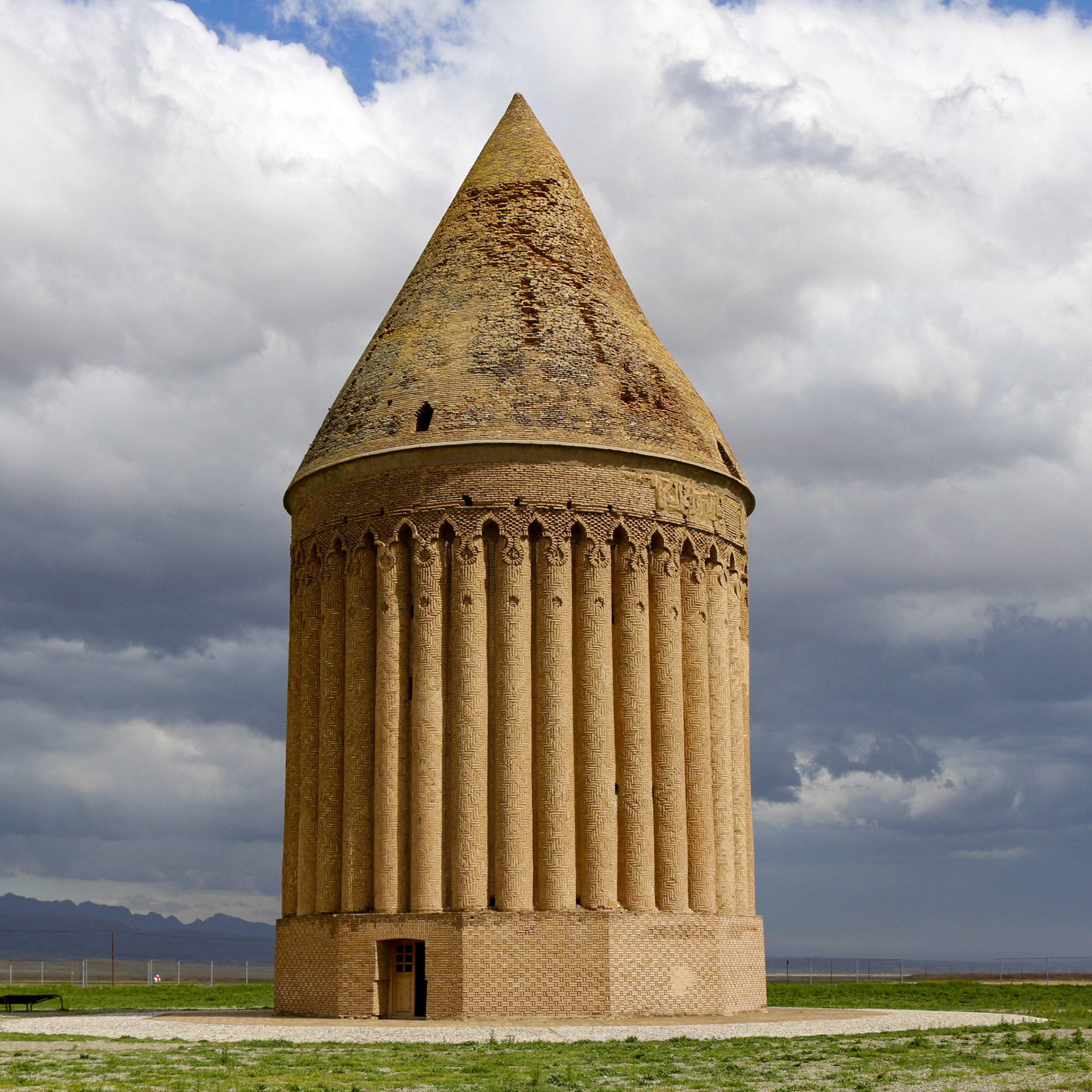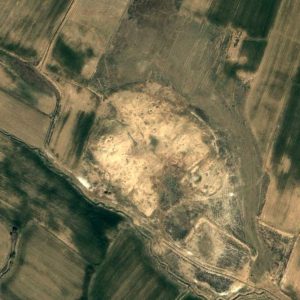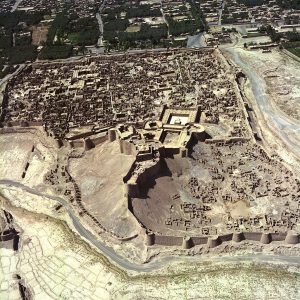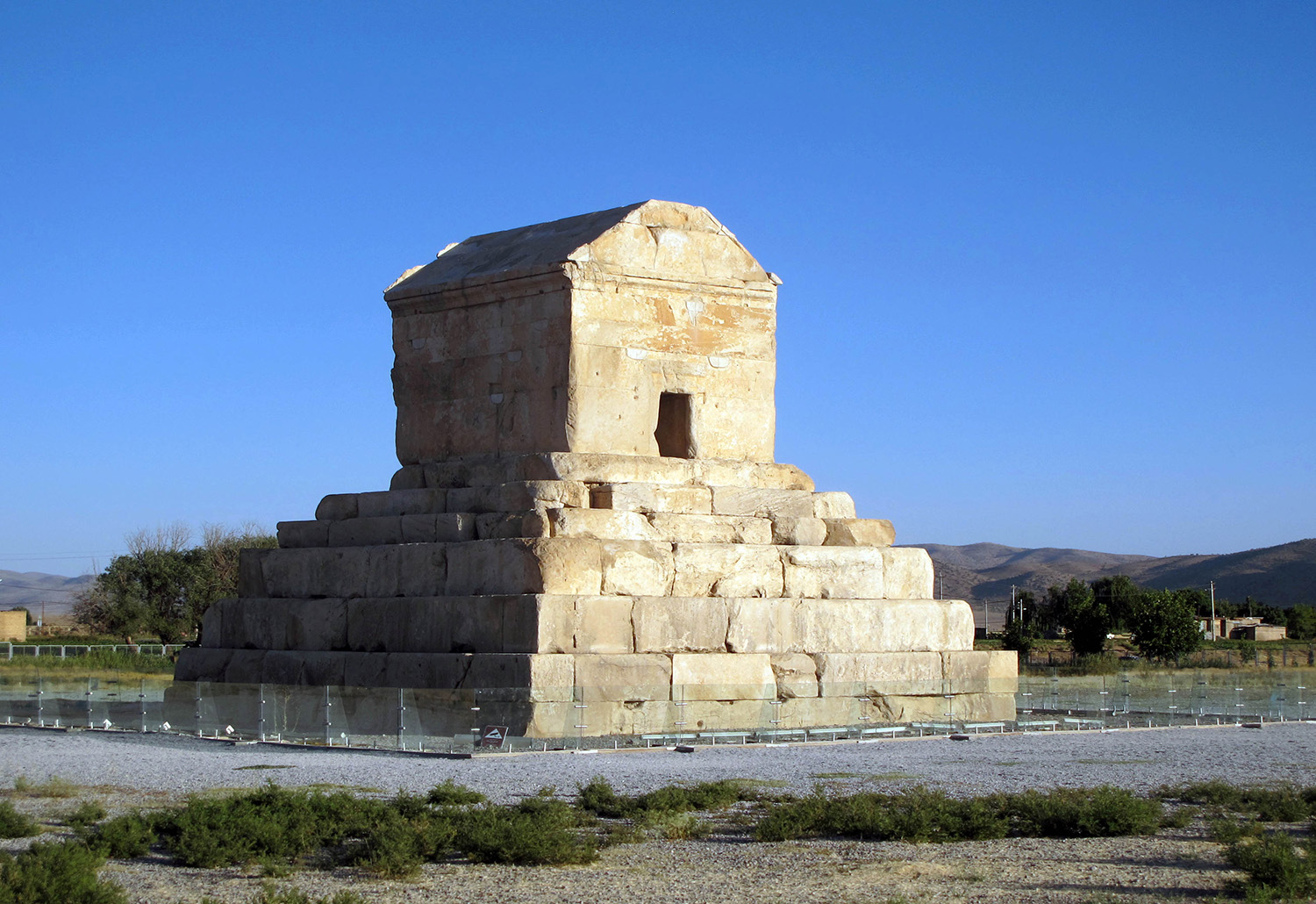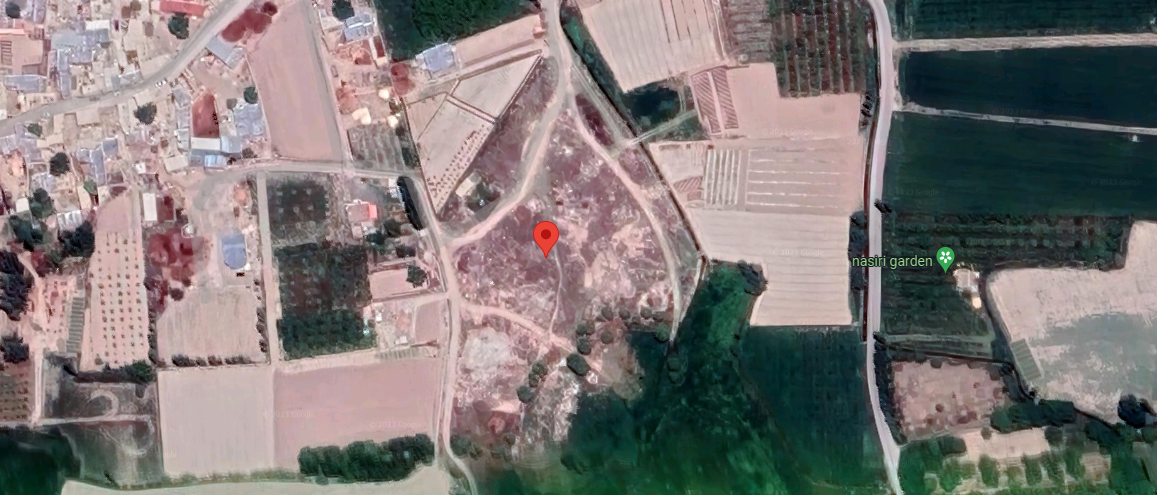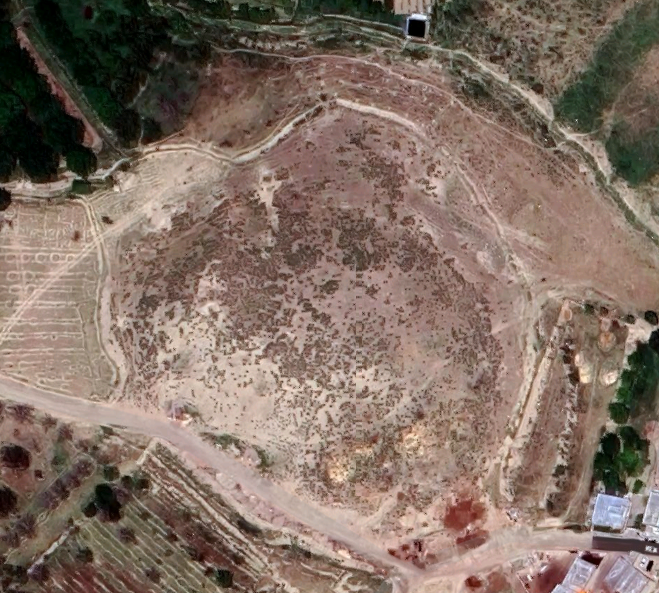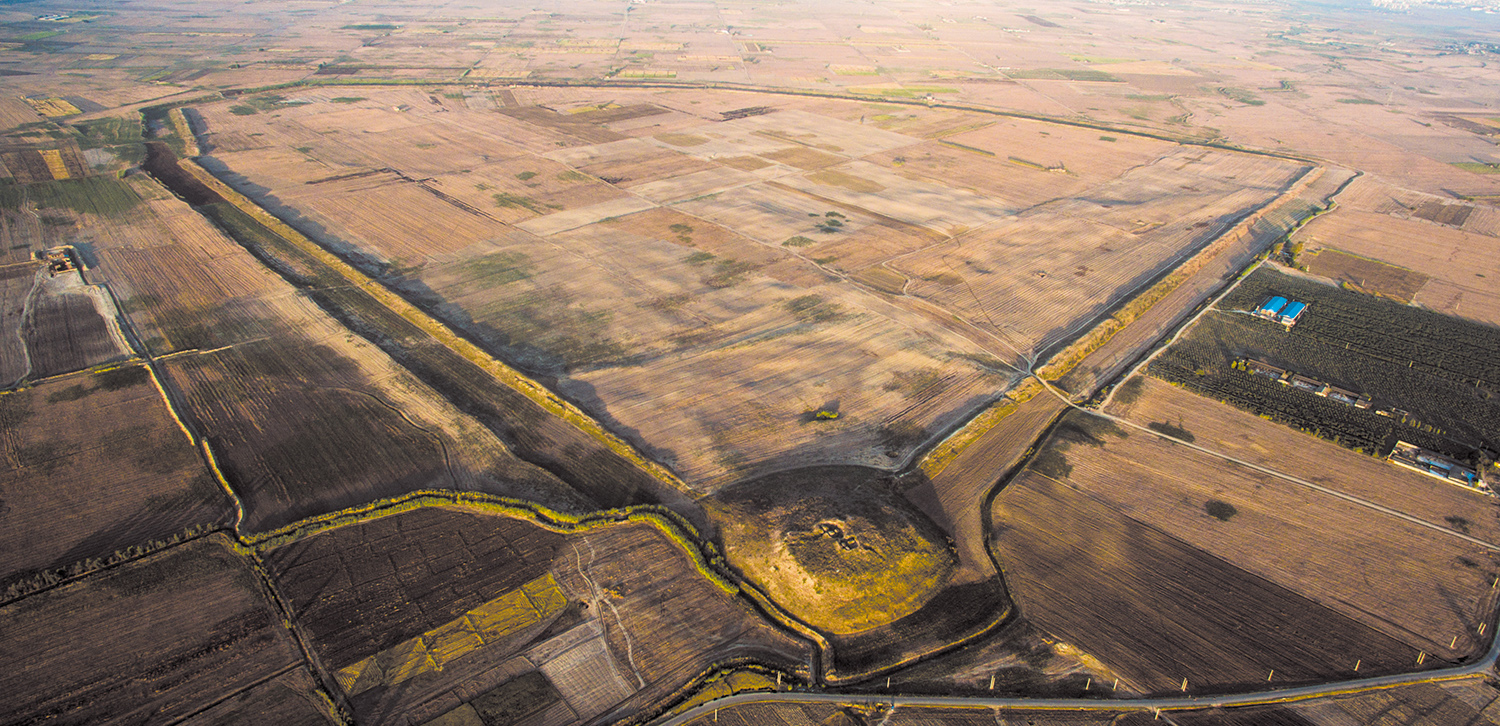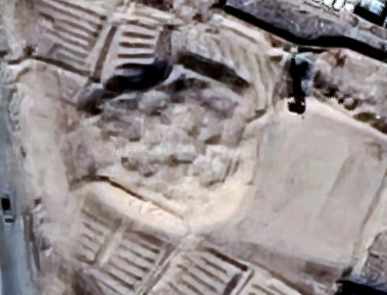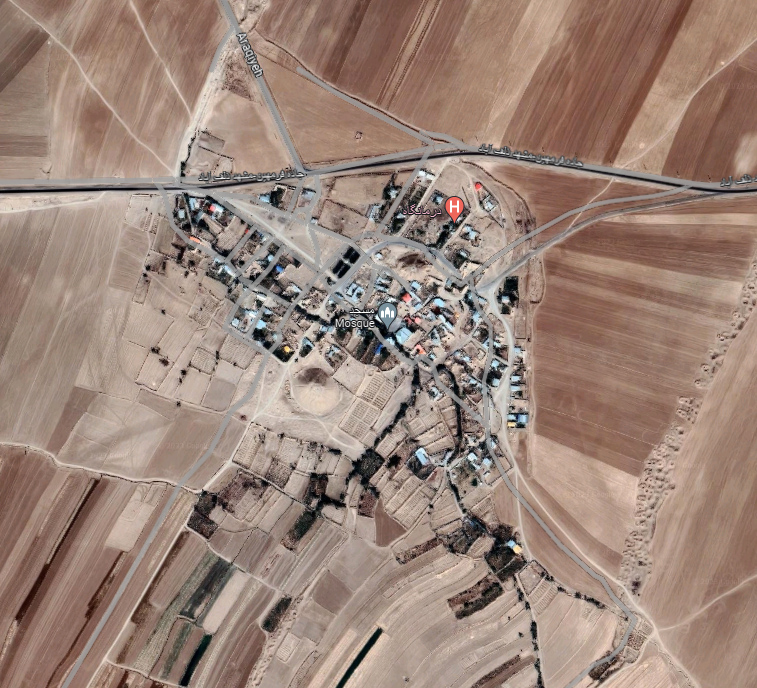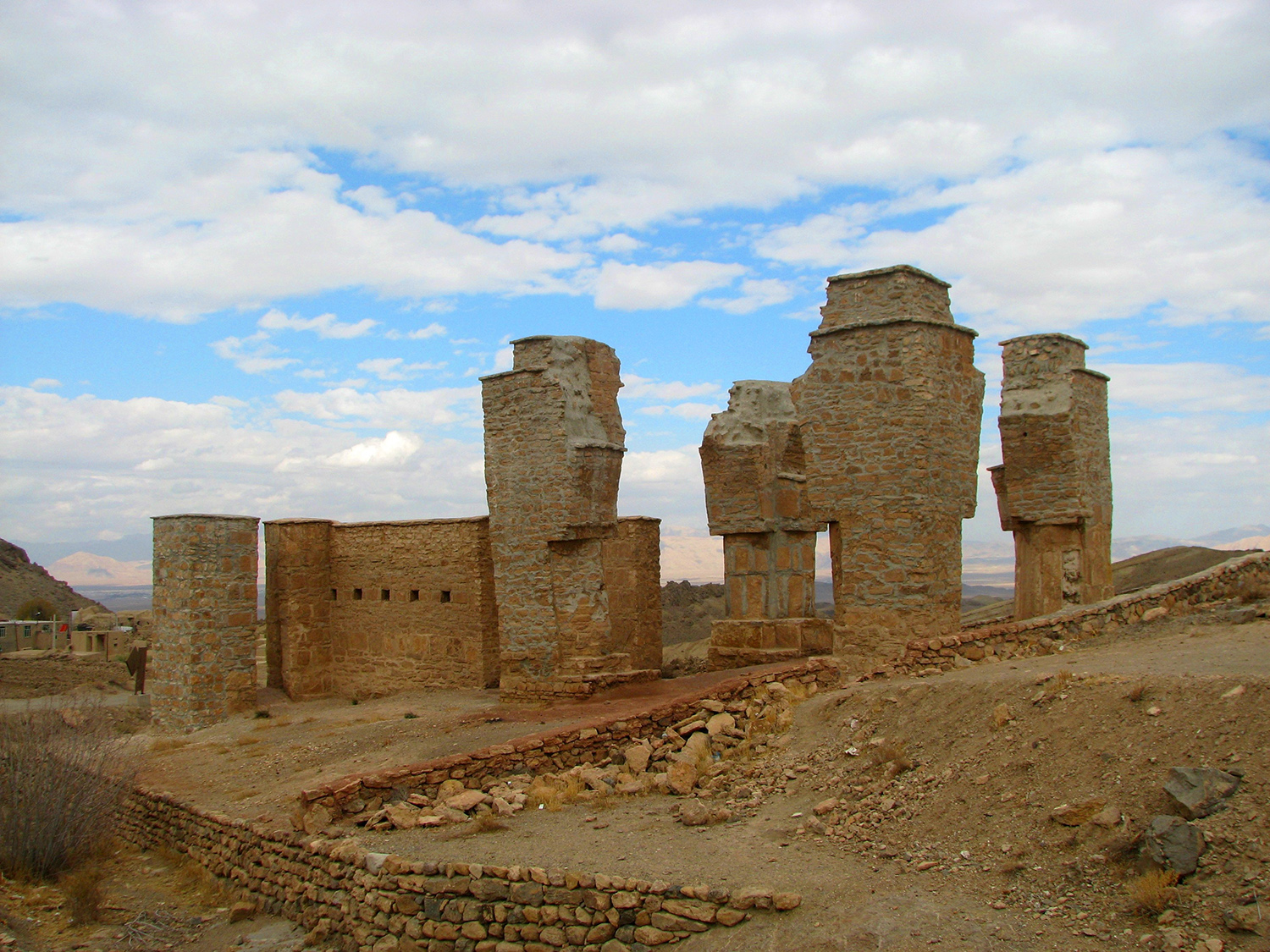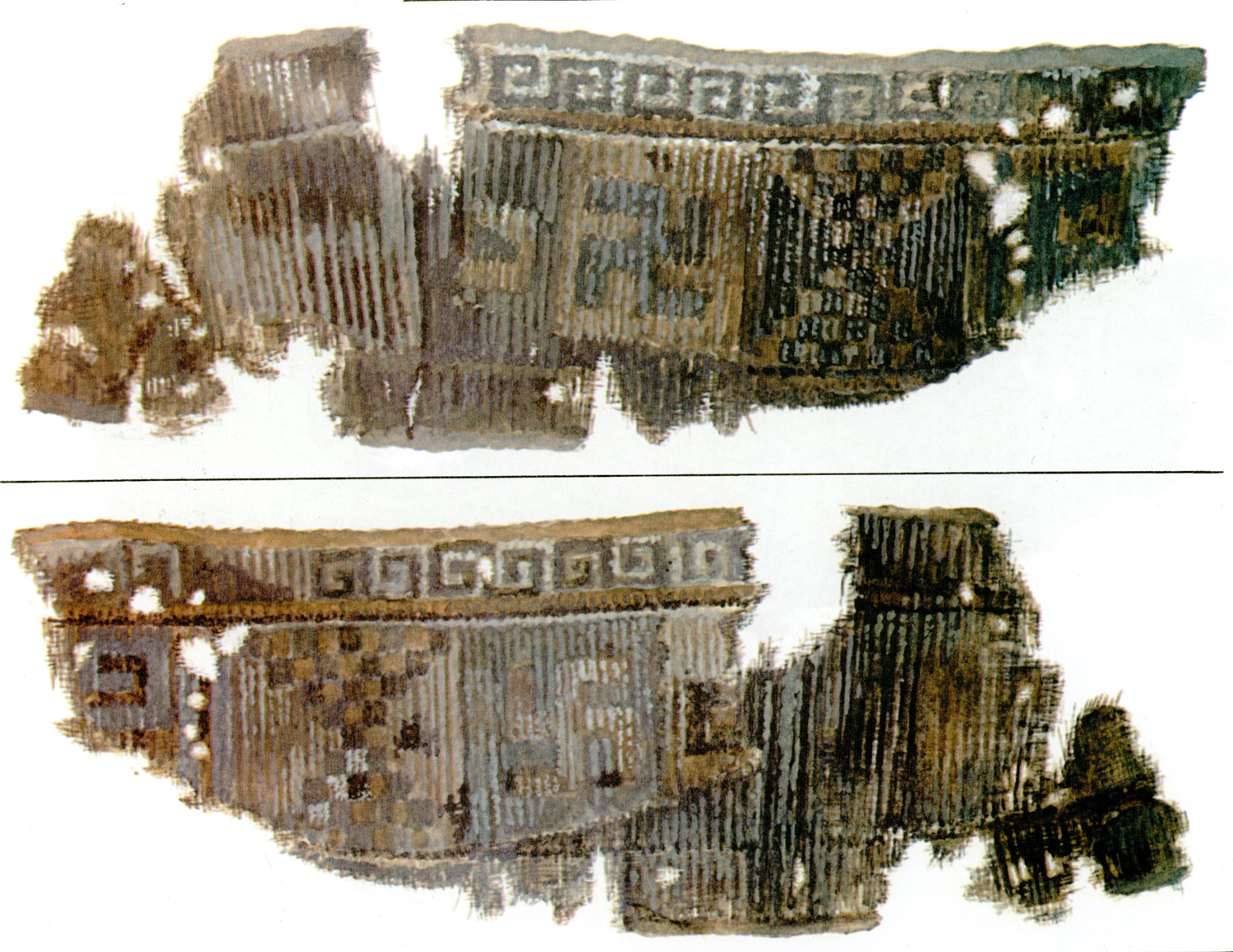Tepe Ahangarānتپه آهنگران
Location: Tepe Ahangarān is located in a village of the same name, 35 km north of Arāk, in central western Iran, Markazi Province.
34°23’35.6″N 49°40’13.0″E
Map
Historical Period
Achaemenid?, Islamic
History and description
Tepe Ahangarān is a roughly oval mound on the southern edge of the village of Ahangarān on the Arāk-Farmahin road. The tepe is located to the south of an Imamzadeh known as Zeynab Khātūn with a conical, blue-tiled dome. Dug away on its sides, particularly along the western side facing the newly broaden Arāk-Farmahin road, the present-day mound is the nucleus of a larger site. It seems that the top layers were the site of a fort of the Late Sasanian/Islamic period. Based on the surface pottery, Ahangarān is an Islamic period site; the presence of “an early sherd, a jar rim with everted, deep groove running down the center of the rim – not unlike certain profiles from Fars in the Achaemenid period,” noticed by David Stronach and Cuyler Young during their 1965 survey, the site may have been dated to Pre-Islamic times.
Archaeological Exploration
The mound was first recorded by David Stronach and Cuyler Young in their unpublished 1965 survey of western Iran.
Bibliography
Stronach, D. and T. C. Young, The 1965 Archaeological Survey of Western Iran, unpublished manuscript, the David Stronach Archive, BIPS.
Author: Ali Mousavi, February 14, 2023
Originally published: February 14, 2023
Last updated: September 18, 2024








